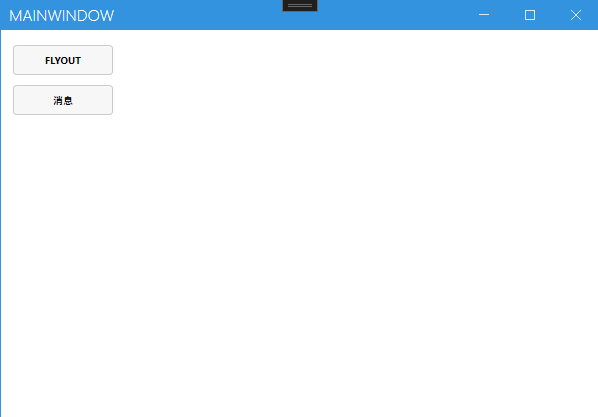MahMetro 框架学习
学习建议:
1.从Demo开始:运行官方Demo,玩遍每一个功能,看看它是如何实现的。
2.动手实践:在自己的一个小项目中应用它,从改造MetroWindow和设置主题开始
3.逐个攻克:依次自学习一个控件(比如先学会用Flyout,再学HamburgerMenu),不要试图一下子掌握所有内容
4.善用搜索引擎:遇到问题时,搜索"MahApps.Metro[你的问题]",通常能在StackOverFlow或 GitHub lssus中找到答案
1.安装框架 install-package MahApps.Metro
2.设置资源字典
-
说明:Controls.xaml 和Fonts 是必须的核心样式
-
Themes/Light.Blue.xaml 定义了主题和配色,你可以将其改为Dark.Blue.xaml或Light.Red.xaml
<Application.Resources>
<ResourceDictionary>
<ResourceDictionary.MergedDictionaries>
<!--MahApps.Metro核心样式和主题-->
<ResourceDictionary Source="pack://application:,,,/MahApps.Metro;component/Styles/Controls.xaml" />
<ResourceDictionary Source="pack://application:,,,/MahApps.Metro;component/Styles/Fonts.xaml" />
<!--主题(Accent)和基础主题(Base Theme:Light/Dark)-->
<ResourceDictionary Source="pack://application:,,,/MahApps.Metro;component/Styles/Themes/Light.Blue.xaml" />
</ResourceDictionary.MergedDictionaries>
</ResourceDictionary>
</Application.Resources>
3.修改窗体类
引用命名空间: xmlns:controls="http://metro.mahapps.com/winfx/xaml/controls"
修改窗体
4.修改后台代码
引用命名空间:using MahApps.Metro.Controls
基类由Window 改为MetroWindow
运行: 通过以上步骤可以看出,框架的使用和其他类似框架一样。
Demo1-Metro.Flyout 使用
-
Flyout 是一种飞入式伸缩窗口,类似抽屉。在很多UI设计中为解决界面杂乱臃肿和多种功能集成调用设计中起到简化UI设计又兼备多种功能的集成提供了很好的设计模式和借鉴。
示例:
-
XAML:
<mah:MetroWindow x:Class="WpfApp1.MainWindow"
xmlns="http://schemas.microsoft.com/winfx/2006/xaml/presentation"
xmlns:x="http://schemas.microsoft.com/winfx/2006/xaml"
xmlns:d="http://schemas.microsoft.com/expression/blend/2008"
xmlns:mc="http://schemas.openxmlformats.org/markup-compatibility/2006"
xmlns:local="clr-namespace:WpfApp1"
xmlns:mah="http://metro.mahapps.com/winfx/xaml/controls"
xmlns:pu="clr-namespace:Panuon.UI.Silver;assembly=Panuon.UI.Silver"
mc:Ignorable="d"
Title="MainWindow" Height="420" Width="600"
WindowStartupLocation="CenterScreen">
<mah:MetroWindow.Flyouts>
<mah:FlyoutsControl>
<mah:Flyout x:Name="FirstFlyout" Header="设置" Position="Right" Width="250">
</mah:Flyout>
<mah:Flyout x:Name="f2" Header="设置" IsOpen="{Binding IsOpen}" Position="Right" Width="300">
<StackPanel Margin="20" Orientation="Vertical">
<Button Content="打开" Width="80" Height="30" Margin="5"/>
<Button Content="修改" Width="80" Height="30" Margin="5"/>
<Button Content="保存" Width="80" Height="30" Margin="5"/>
<mah:ToggleSwitch Header="蓄电池闸刀" OffContent="断开" OnContent="闭合" />
<mah:ToggleSwitch Header="启机按钮" OffContent="停机" OnContent="启机" />
<mah:ProgressRing x:Name="progress" Height="50" Width="50"/>
</StackPanel>
</mah:Flyout>
</mah:FlyoutsControl>
</mah:MetroWindow.Flyouts>
<Grid>
<Grid.ColumnDefinitions>
<ColumnDefinition Width="Auto"/>
<ColumnDefinition />
</Grid.ColumnDefinitions>
<StackPanel Orientation="Vertical" Margin="2 10">
<Button Width="100" Command="{Binding OpenSet}" Height="30" Margin="10 5" Content="Flyout" />
<Button Width="100" Margin="10 5"
Height="30"
Style="{StaticResource MahApps.Styles.Button}"
Content="消息"
Command="{Binding FoolMessageCommand}"
/>
</StackPanel>
</Grid>
</mah:MetroWindow>
-
Code
using MahApps.Metro.Controls;
using MahApps.Metro.Controls.Dialogs;
using WpfApp1.ViewModels;
namespace WpfApp1
{
/// <summary>
/// MainWindow.xaml 的交互逻辑
/// </summary>
public partial class MainWindow : MetroWindow
{
private MainViewModel main;
public MainWindow()
{
InitializeComponent();
main = new MainViewModel(DialogCoordinator.Instance);
DataContext = main;
}
}
}
using CommunityToolkit.Mvvm.ComponentModel;
using CommunityToolkit.Mvvm.Input;
using MahApps.Metro.Controls.Dialogs;
using System.Threading.Tasks;
using System.Windows.Input;
namespace WpfApp1.ViewModels
{
public class MainViewModel : ObservableObject
{
private IDialogCoordinator dialogCoordinator;
private bool isopen;
public bool IsOpen
{
get => isopen;
set => SetProperty(ref isopen, value);
}
private ICommand openSet;
public ICommand OpenSet
{
get
{
if (openSet == null)
{
openSet = new RelayCommand(() =>
{
IsOpen = true;
});
}
return openSet;
}
}
private ICommand foolMessage;
public ICommand FoolMessageCommand
{
get
{
if (foolMessage == null)
{
foolMessage = new RelayCommand(() =>
{
FoolMessage();
});
}
return foolMessage;
}
}
//该框架内涵依赖注入功能,可以直接在构造函数中注入IDialogCoordinator
public MainViewModel(IDialogCoordinator dialogCooldinatorParam)
{
openSet = new RelayCommand(() =>
{
IsOpen = true;
});
dialogCoordinator = dialogCooldinatorParam;
}
public async Task ShowMessageAsync(string title, string message)
{
await dialogCoordinator.ShowMessageAsync(this, title, message);
}
public async void FoolMessage()
{
await dialogCoordinator?.ShowMessageAsync(this, "标题", "内容");
}
}
}
using CommunityToolkit.Mvvm.ComponentModel;
using CommunityToolkit.Mvvm.Input;
using MahApps.Metro.Controls.Dialogs;
using System.Threading.Tasks;
using System.Windows.Input;
namespace WpfApp1.ViewModels
{
public class MainViewModel : ObservableObject
{
private IDialogCoordinator dialogCoordinator;
private bool isopen;
public bool IsOpen
{
get => isopen;
set => SetProperty(ref isopen, value);
}
private ICommand openSet;
public ICommand OpenSet
{
get
{
if (openSet == null)
{
openSet = new RelayCommand(() =>
{
IsOpen = true;
});
}
return openSet;
}
}
private ICommand foolMessage;
public ICommand FoolMessageCommand
{
get
{
if (foolMessage == null)
{
foolMessage = new RelayCommand(() =>
{
FoolMessage();
});
}
return foolMessage;
}
}
//该框架内涵依赖注入功能,可以直接在构造函数中注入IDialogCoordinator
public MainViewModel(IDialogCoordinator dialogCooldinatorParam)
{
openSet = new RelayCommand(() =>
{
IsOpen = true;
});
dialogCoordinator = dialogCooldinatorParam;
}
public async Task ShowMessageAsync(string title, string message)
{
await dialogCoordinator.ShowMessageAsync(this, title, message);
}
public async void FoolMessage()
{
await dialogCoordinator?.ShowMessageAsync(this, "标题", "内容");
}
}
}
-
效果:







 浙公网安备 33010602011771号
浙公网安备 33010602011771号